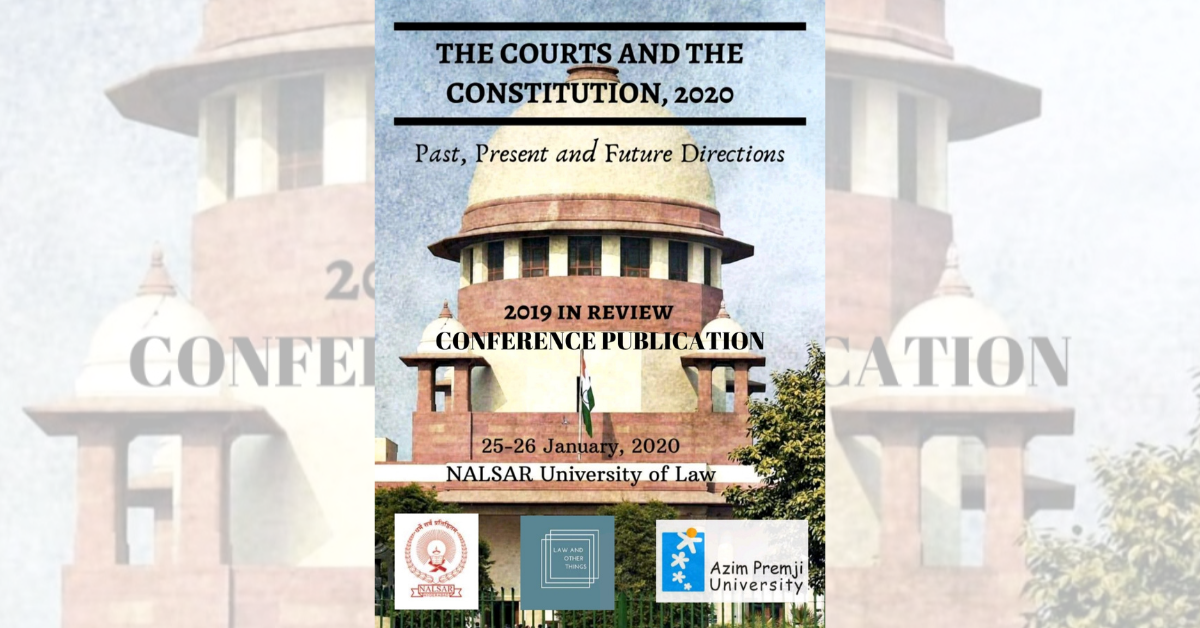This article has been authored by Akshat Bhushan and Avishek Mehrotra. On May 15, 2020, the Allahabad High Court decided upon a writ petition (‘Azan judgment’) seeking upliftment of the ban on Azan...
This section will be a one-stop platform for all announcements related to the Conference. It will bring together Panel-by-Panel reports as well as a compiled publication developed from the...
In early 2007, two female law students in America were targets of degrading comments on the site “AutoAdmit”, a discussion page meant for law students and lawyers. In her article on internet...
Shivraj Singh Chouhan, the Chief Minister of Madhya Pradesh took oath on March 23, 2020. Almost a month until then, the governance was being carried out by the Chief Minister alone without the...
NALSAR University of Law recently concluded the second edition of its ‘The Courts and the Constitution Conference’ held in partnership with Azim Premji University and the blog Law and Other Things...
In January 2019, Law and Other Things, in collaboration with the National Academy of Legal Studies and Research and Azim Premji University, organized the first Court and Constitution Conference in...
The Citizenship Amendment Act alters the definition of ‘illegal immigrant’ for the purposes of the Citizenship Act 1955. It provides that ‘persons belonging to minority communities, namely, Hindus...
Taxation is omnipresent and makes its presence felt in all spheres of life. From a legal standpoint, when one contemplates on the fundamentals of taxation, the first set of questions which arise are...
The Criminalization of PUBG in Gujarat: A Frivolous Affair?
In our latest piece, the author highlights the criminalization of PUBG in Gujarat with special focus on Section 37(3) of the Gujarat Police Act, 1951. The author discusses this in the light of the...
Life without Remission: An Irreviewable and Unconstitutional Punishment
In this piece, the authors look at the new trend in the Indian judicial system, of remitting death sentences to life sentences, but without the option of further remission under any circumstances.









